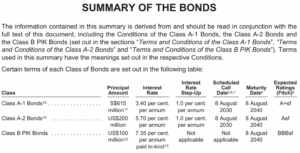Unlocking Desire: The Surprising Truth About Soft Doms That Will Change How You See BDSM Forever
If the word “dom” still brings to mind leather masks, dungeon chains, or some dollar-store version of Christian Grey, you’re not alone. That harsh, hyper-controlling version of BDSM is what pop culture has fed us for years—but, in reality, dominance can look a lot gentler and more emotionally attuned.
Enter the soft dom. It’s a term that’s tossed around a lot on the internet and social media— especially in the kinkier corners of TikTok and Reddit—and it’s more about how dominance is expressed, rather than how intense it is. Think of it as praise over punishment, and emotional presence over pure power plays.
Still, you might be wondering what being a true soft dom actually entails. How does that style of dominance differ from others you might’ve heard of or experimented with yourself? To answer all your questions, we asked leading kink and BDSM experts to help break it down in the clearest soft dom terminology possible.
So…what actually is a soft dom?
There’s no official checklist or rigid definition of what makes someone a soft dom. Like most identities within kink, it’s a term people gravitate toward because it feels right, not because they passed an online BDSM quiz.
“There’s no way to give a specific definition of soft dom,” says Dulcinea Alex Pitagora, an NYC-based psychotherapist, sex therapist, and BDSM expert. “It could relate to physical expression, verbal or non-verbal communication, or types of interactions and kink play.” In other words, it’s more of a vibe than a fixed title. As for what that vibe is? Compassionate, communicative, and emotionally dialed-in sums it up best.
A soft dom could also be described as, “a dominant person who likes being in control, but prefers a more compassionate, empathic, even gentle approach,” says Gloria Brame, PhD, an award-winning sex therapist, sexologist, and best-selling author. This means they still lead the scene and direct their partner, but do it with kindness and care.
What are other types of doms?
BDSM includes a spectrum of dom styles, and soft doms often get grouped with others who lead gently or emotionally. But not all soft-leaning dom types are created equal. Here’s how they stack up against four closely related dom archetypes:
Pleasure Doms
These doms focus on giving the sub erotic satisfaction, often building the scene around their partner’s arousal. While soft doms may also prioritize pleasure, Brame notes they’re “more focused on the power dynamic and emotional connection than purely orgasmic results.”
Service Doms
Service doms sometimes let their submissive take the lead, especially when fulfilling specific requests. “They ask the sub about their desires and follow the sub’s script or favorite kink pleasures,” Brame explains. Soft doms still maintain clear authority, guiding rather than following.
Daddy/Mommy Doms
These doms take on a nurturing parental role, positioning themselves as protectors and teachers. While soft doms can also be nurturing, they “don’t necessarily adopt a parental persona or dynamic,” Brame says.
Sensual Doms
Sensual doms use slow, more intimate interactions to create a scene. They prioritize physical connection over that deep, intense power exchange you might see with other doms.
Pitagora cautions that while these categories may overlap, “strictly defining terms is problematic…for some, there may be no apparent behavioral difference at all among those terms, while for others, their expressions could be very distinct.”
Ultimately, the common thread for soft doms is that they offer direction, structure, and “won’t try to push limits like other dom types might,” says Brame.
How to Tell If You’re a Soft Dom
So how do you know if this gentler-but-still-in-charge energy fits your style in bed? Here are four expert-backed signs soft domming might be your thing:
• You’re emotionally tuned in.
“When someone is attuned to themself and to their partner(s), they may find themself gravitating toward a particular power role orientation,” says Pitagora.
• You lead with gentleness, not fear.
Brame notes that soft doms “expect the sub to obey from a place of joy, never fear or shame.”
• You care about consent and emotional safety.
As Pitagora emphasizes, “Regardless of how soft someone wants to be, they should not experiment…without the explicit consent of their partner.”
• You value intimacy over intensity.
“Soft domination excludes intense sensations like challenging pain,” Brame explains. The strength and control are still there, only they’re expressed with more care than chaos.
How to be a soft dom
Being a soft dom isn’t about being passive—it’s about being intentional, emotionally present, and totally clear in your communication. Here’s how to ease into it:
1. Establish clear communication.
Embracing a soft dom kink starts by talking openly about boundaries, comfort levels, and consent. “Do communicate with your partner to get very clear on what everyone understands different terminology to mean,” says Pitagora.
2. Ease in with small commands.
“Start with small commands or rituals,” says Brame. That could mean asking your partner to kneel, wear something specific, or slow down the pace of intimacy.
3. Use calm, affirming language.
Soft doms might say things like “Show me what you want” or “Take off your clothes for me” in a steady tone, reinforcing it with praise like “Good job” or “I love how you listen.”
4. Read non-verbal cues.
This is about both leading and observing. “Intonation might be different, it might not. The type of language used might be different, but it also might not,” says Pitagora. “It really depends on the people involved.”
5. Reinforce through praise and emotional closeness.
Rather than spanking or punishment, soft doms might use teasing or symbolic gestures to keep the power dynamic intact. The reward? Emotional intimacy that hits harder than any paddle.
How to practice aftercare as a soft dom
Aftercare is critical to any BDSM interaction, but especially as a soft dom where emotional connection is key.
“Aftercare looks the same when practiced by a soft dom,” says Pitagora. “It should be negotiated ahead of time…and depend on the preferences of those involved.”
That could look like cuddling, verbal affirmation, or a simple snack and check-in. Brame adds that most doms, aside from hardcore sadists, participate in aftercare: “They take care of the sub to help them come down from the neurobiological high…usually caressing them and acknowledging how pleased they were with the sub’s performance.”
Soft doms tend to treat this not as a fade-out but as an intentional part of the connection.
As for what a soft dom definitely isn’t…
There’s a common misconception that being a soft dom is just “BDSM-lite.” But the experts agree that’s just not true.
“To those who believe that the best BDSM is sadistic and hardcore…that’s a myth,” says Brame. “Soft domming is valid and powerful. It’s not less—it’s just different.”
Pitagora adds: “Soft domming is not just being a little bit mean, or having a light hand with impact play.” It’s a legitimate, negotiated, and intentional power dynamic rooted in care and not weakness.














Post Comment